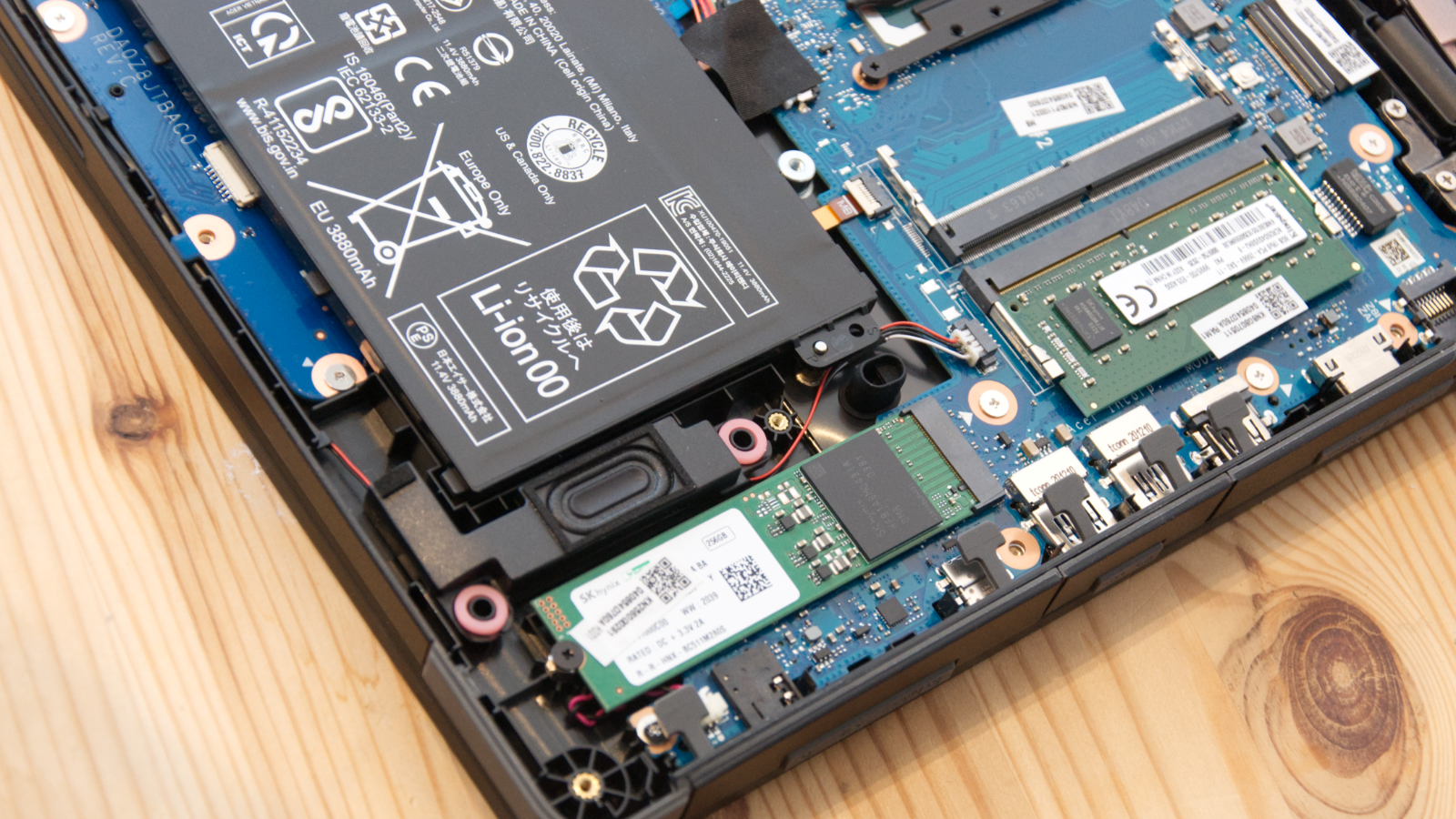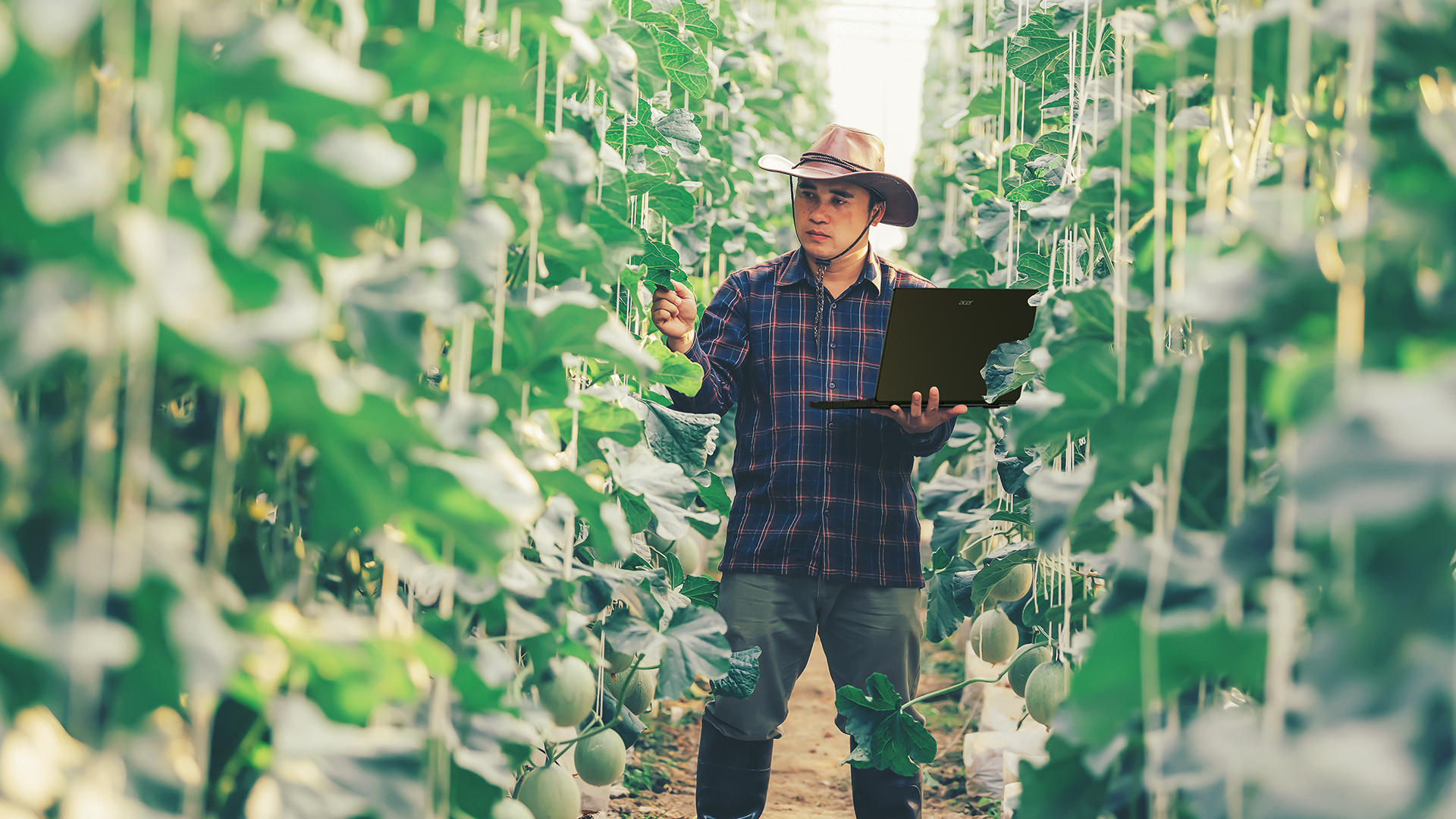Why you can trust TechRadar
In use
Initially, the N3 is a good user experience, mostly because the system boots smartly and the screen is bright, sharp and colourful.
Our only reservation about the screen is that its surface is on the shiny side, making viewing it outdoors on a bright day sometimes problematic.
What starts to takes the shine of this is the offset placement of the touchpad and the less than logical placement of the various ports.
Those that don’t like the touchpad will probably want to use a mouse, and often a USB-A port is provided on the right where this can connect. But on the N3, that port is on the left, and towards the front, which isn’t ideal.
That Acer included an RS232 serial port, we can rationalise, even if a converter from a USB port might have made even greater sense and offered more flexibility.
What we don’t fathom is why they gave it a VGA port? Acer shouldn’t be pandering to those using screens that only have VGA, and those PC makers that do are only prolonging the death of technology that was defunct twenty years ago.
Another issue is that the rubberised port covers are in clusters. While you only might want one port from that selection, the cover needs to be open, exposing them all.
Each port should have had a cover, and some, like the LAN port, should have hinged at the top and not the bottom.
With an SSD and a reasonably powerful processor, the N3 could have been great to use, but design choices have relegated it to merely acceptable.

Performance
Here's how the Acer ENDURO N3 scored in our suite of benchmark tests:
3DMark Wild Life: 2,402, Fire Strike: 1,005, Time Spy: 418
Cinebench R20 CPU: 1,217
Cinebench R23 CPU: 981 (single-core); 2,939 (multi-core) GeekBench 5: 1,001 (single-core); 2,688 (multi-core) CrystalDiskMark: Sequential Read: 2,064MB/s; Sequential Write: 971MB/s; 4KiB Q32T1 Random Read: 435.9MB/s; 4KiB Q32T1 Random Write: 383.1MB/s
PCMark 10 (Home Test): 3,655 points
PCMark 10 Battery Life: 9 hours and 29 minutes
In common with many laptops using 10th Generation Intel processors, the performance of the N3 isn’t anything special.
The i5-10210U processor in the review machine is a quad-core CPU built using the 14-nanometer fabrication that Intel introduced with 8th Gen chips, and not the more power-efficient 10nm scaling that the recent G series silicon sports.
The only advantages that the 2019 released i5-10210U has over its 8th Gen cousins are higher clock speeds and support for faster memory.
These enhancements only deliver small differences in benchmark scores, and the most damning aspect is the unchanged integrated GPU.
To address the limitations of the mediocre video processing Acer has a version of the N3 with an NVIDIA GeForce MX230 installed. This technology wasn’t in the review hardware, and its inclusion wouldn’t turn the N3 into a gaming machine, as this is the very bottom rung of the GeForce GPU technology. Being better than the Intel UHD video doesn’t make the MX230 a good GPU, or even close to one.

Storage is provided by SK Hynix with the HFM256GDJTNI-82A0, an NVMe PCI Express M.2 module with a mediocre quoted performance of just 2200 MB/s reads and 900 MB/s writes.
In our benchmarking, it failed to hit that read speed, managing just 2064 MB/s, but it bettered the quoted write performance with 971 MB/s. This drive is better than a SATA connected SSD, and its power consumption is modest, but it doesn’t deliver the potential NVMe experience.
Where this design is much better is its sustainability away from mains power, as the 48 Wh 3-cell Li-ion battery delivers in excess of a working day even if you are using the machine continually. Many PC makers claim silly amounts of battery life, but the N3 claims are relatively close to the actual experience most users will have.
We got nearly 9.5 hours on a continuous test, and by lowering performance slightly and screen brightness it might be possible to hit the 13 hours that Acer claims.

Upgrades
There are two potential upgrades that can be installed on the N3; memory and storage.
To accomplish either of these enhancements requires the user to remove thirteen screws from the bottom, releasing the entire underside.
Once inside, the locations for the M.2 SSD and SODIMM memory modules aren’t hard to find. Typically, the memory upgrade is merely a matter of inserting a SODIMM of the correct specification into the free slot or upgrading both slots. The review hardware came with 8GB of RAM, but these slots accept 16GB DDR4 modules, allowing the system to have a maximum of 32GB.
Storage upgrades are more of a challenge. Our review machine came with a 256GB NVMe drive installed in the single M.2 slot, and therefore switching this for a larger module would require a complete OS reinstall. Or making an image to an external drive and then reinstalling after the new module was installed.
That’s annoyingly awkward and could have been avoided with another M.2 slot.
The machine can also come with a SATA SSD, and we located the void where that 2.5-inch drive would be placed. But the cabling to connect this to the motherboard wasn’t included, making this an impossible upgrade unless the machine was originally installed with an SSD.
System builders like to price storage high, so making it more challenging to buy a low specification system and then cheaply enhance it isn’t something they’re overly keen to facilitate. And the N3 is a classic example of how to convince customers to pay the extra from the outset.
Final verdict
The best aspects of this design as the excellent screen and the ruggedisation that manages to provide a degree of protection without making the N3 overly heavy or bulky.
It also manages to have enough battery life to make working without a power socket a realistic proposal.
However, there are irritating quirks that made it into production that should have been eliminated at the design phase or prototyping.
The LAN socket orientation is a classic example; On the N3, the port cover interferes with the cable release catch, making it tricky to disconnect the Ethernet cable as the catch is inaccessible without lifting the computer up.
The port should have been either on its side, inverted, or had a cover hinged at the top. Usability testing should have found this issue and others.
Also, all the USB is on the left, when most users would prefer at least one port on the right, and none of these ports is of USB 3.2 Gen 2 standard. A Thunderbolt 3 port with the ability to downgrade to USB 3.2 Gen 2 would have addressed this limitation and provided another means to connect displays.
None of these things is a showstopper alone, but collectively they demonstrate that the N3 had the potential to be brilliant with a tiny bit more forethought.
The Intel platform it uses isn’t exciting, and it might have been better as an AMD Ryzen design, but Intel prices these chips to the big makers to justify using them.
When we first got the N3, our initial impressions made us wonder why it didn’t cost more, considering the features and Acer’s build quality. But having used it, the pricing is an accurate representation of what this machine is probably worth and not the bargain it might have been.
- 1
- 2
Current page: In use, performance, upgrades and verdict
Prev Page Introduction, price, Acer Enduro range, design and hardwareMark is an expert on 3D printers, drones and phones. He also covers storage, including SSDs, NAS drives and portable hard drives. He started writing in 1986 and has contributed to MicroMart, PC Format, 3D World, among others.

